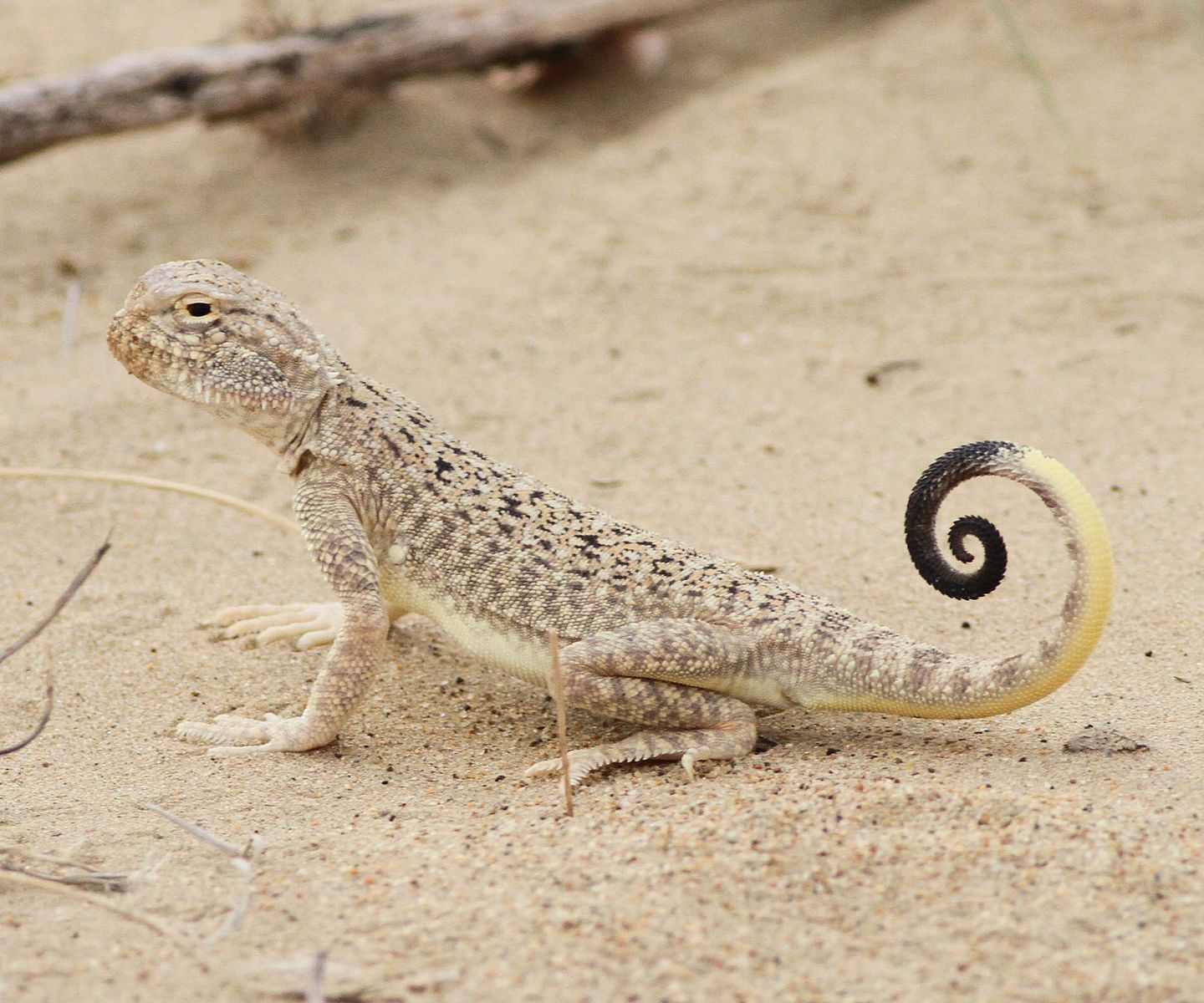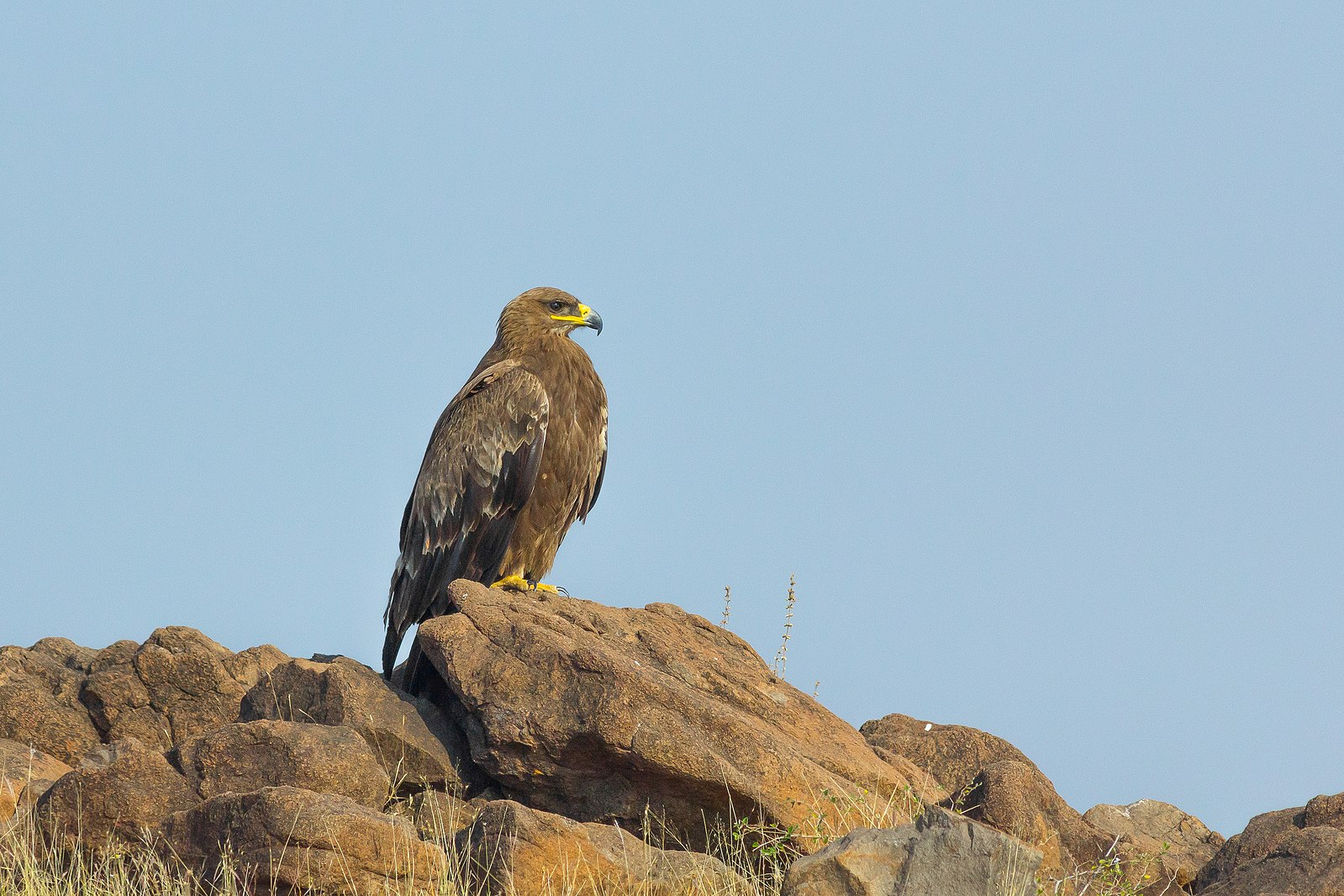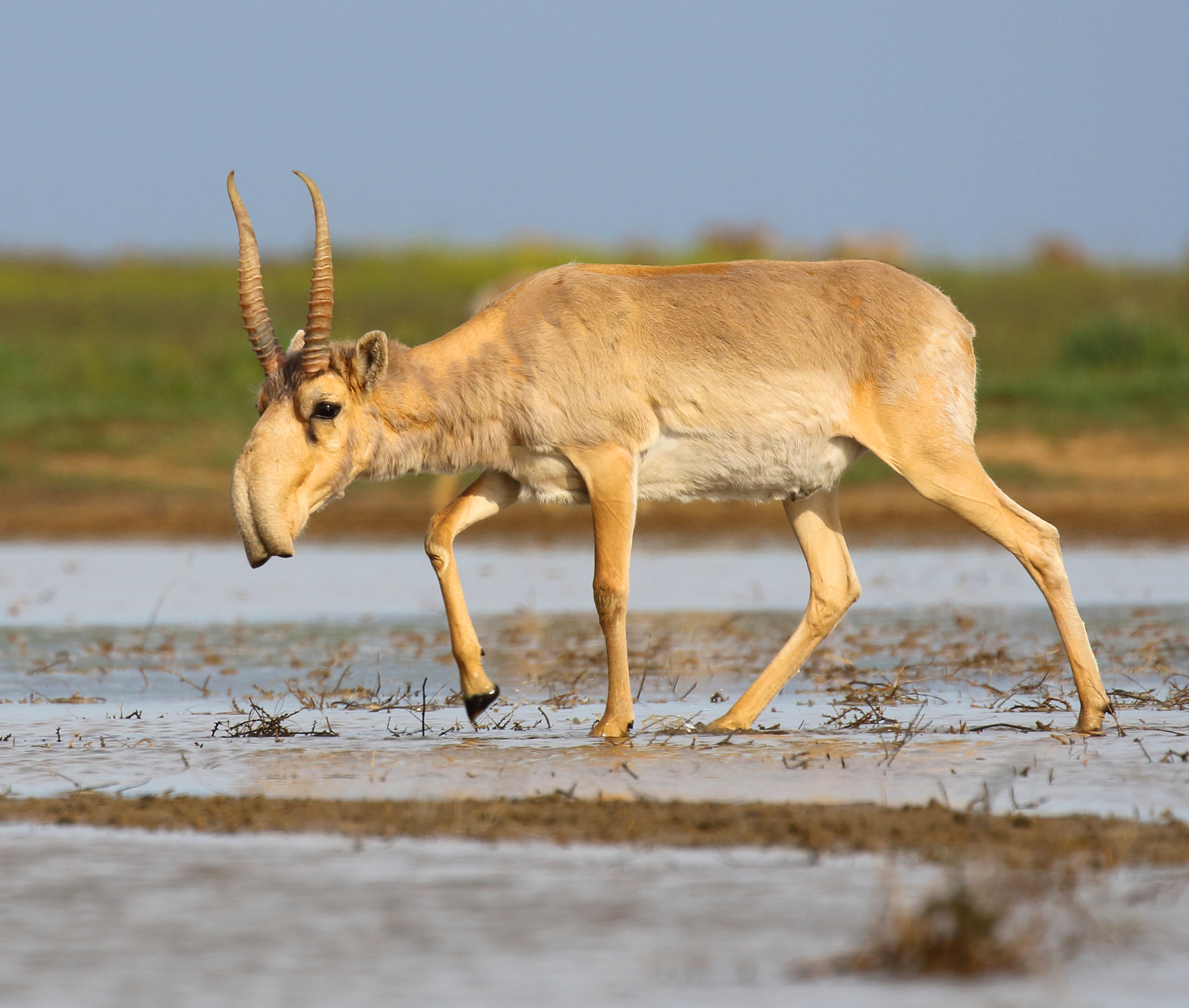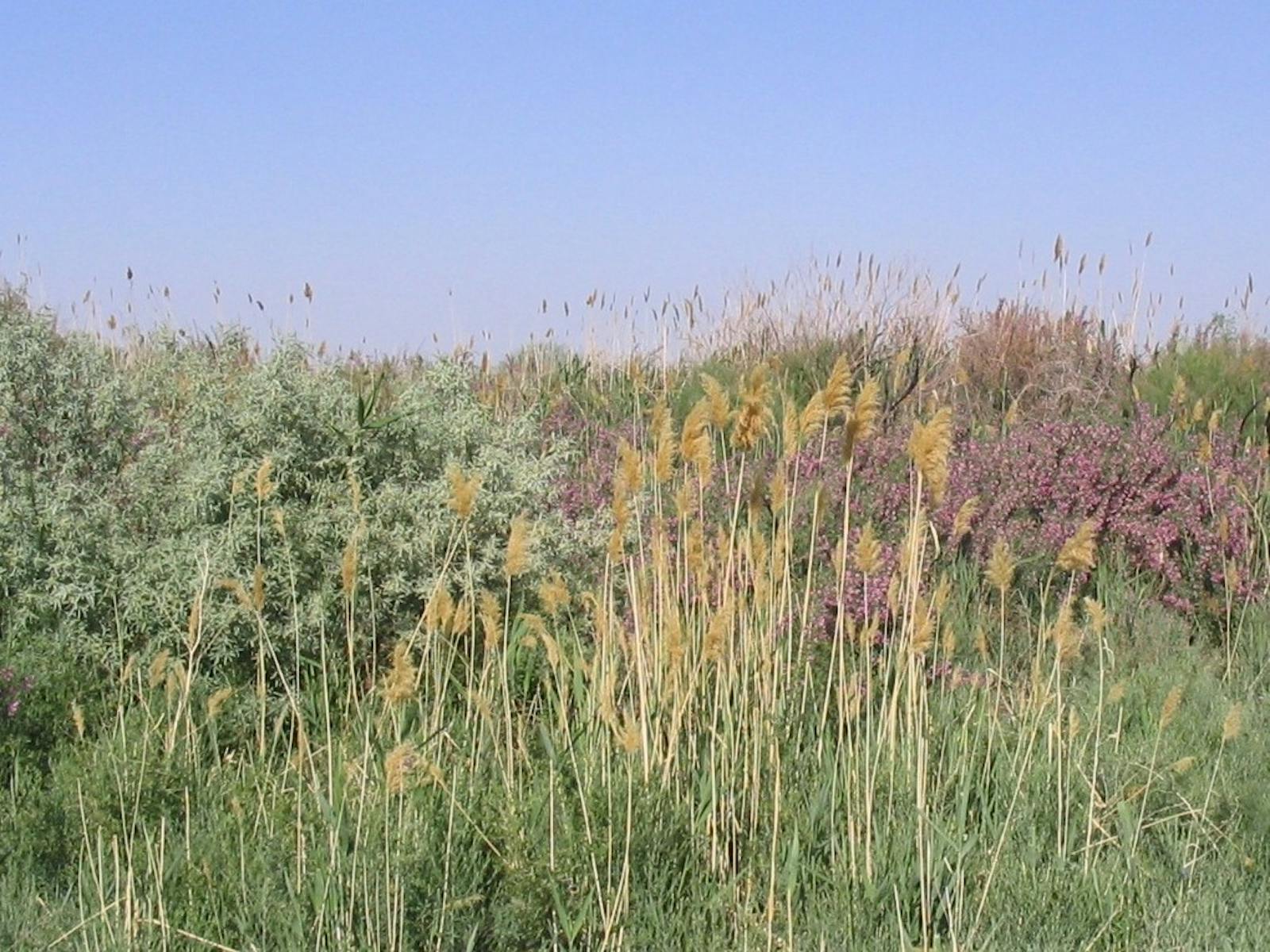Central Asian Riparian Woodlands
The ecoregion’s land area is provided in units of 1,000 hectares. The conservation target is the Global Safety Net (GSN1) area for the given ecoregion. The protection level indicates the percentage of the GSN goal that is currently protected on a scale of 0-10. N/A means data is not available at this time.
Bioregion: Central Asian Deserts & Riparian Woodlands (PA32)
Realm: Central Eurasia
Ecoregion Size (1000 ha):
8,883
Ecoregion ID:
818
Conservation Target:
37%
Protection Level:
3
States: Kazakhstan, Uzbekistan, Turkmenistan
The Central Asian Riparian Woodlands ecoregion comprises a series of riparian forests along the rivers of Syr Darya, Amu Darya, Chu, and Ile. They offer a variety of habitat for wildlife, including reed beds willows, tamarisk shrubs, and saxaul trees. There are also important lakes and reservoirs for wintering and breeding birds. The critically endangered saiga antelope has a resident population here. There are three Important Bird Areas in this ecoregion that are listed as “IBA in danger”.

The flagship species of the Central Asian Riparian Woodlands ecoregion is the toadhead agama. Image credit: Creative Commons
This ecoregion has an area of 88,833 km2, covering four disjunct portions in Turkmenistan, Uzbekistan, and Kazakhstan. These riparian areas are found along the rivers Syr Darya, Amu Darya, Chu, and Ile. Known as “tugai”, these gallery forests are essential habitat for a variety of wildlife. The flora of these areas are made of reed beds, dense forests dominated by poplars and willows and on the borders tamarisk shrubs and saxaul trees. The average temperature is 10.9°C, with a maximum average of 38.3°C and a minimum average of -13.5°C. The average rainfall is of 142.4 mm/year. Prevailing climate is the cold desert type with cold semi-arid closer to the Tien Shan mountain range.
The critically endangered saiga antelope is one of the most notable species in this ecoregion. It is has been extensively hunted for meat as well as for its horns and has also been prone to pasteurellosis, a highly infectious bacterial disease that attacks lungs and intestines. This caused more than 200,000 animals to die in 2015. One of the species' population range intersects this ecoregion in Kazakhstan. Also critically endangered, sociable lapwing presents a wide distribution over this ecoregion while migrating. Endangered species also found here are the Uzbekistan toadhead agama, the white-headed duck, egyptian vulture, pallas's fish-eagle, saker falcon, and steppe eagle.

Steppe eagle. Image credit: Creative Commons
Protected areas in this ecoregion include: Nargyz Zakaznik and Ieradjinskaya of Amudarya Zakaznik and Amu-Darya State Nature Reserve in Turkmenistan; Baday-Tugay State Nature Reserve in Uzbekistan; and Andasayskiy Zakaznik, Iliiskaja delta Zakaznik, and Pribalkhashskiy Zakaznik in Kazakistan. Also intersecting this ecoregion are 18 Important Bird Areas. Some of these have been categorised as under high pressure and listed as "IBA in danger". The Zholdyrbas Lake is localised in a former gulf of the Aral Sea. A large but shallow lake, it has many reedbeds, with the shore lined with large thickets of tamarisk, which offers a diverse habitat for birds. However, it is being threatened by large dams, nomadic grazing, large scale fishing, drought, and an increase in fire frequency and intensity.
The Sudochye Lake consists of several small and four large reservoirs surrounded by reedbeds. It is one of the most ecologically intact zones in the Amudarya river delta, supporting many breeding birds. The main threat here is the reduction or cessation of water flow which would result in the lake drying up with the loss of habitats.
Finally, the Talimardzhan Reservoir is fed by water from the Amudarya River and is an important breeding area in winter, including for the endangered Ferruginous Duck. It is threatened by poor water management where water abstraction can be very high and prevents birds from nesting in the lake. This region is fragmented with close to 50% of the area used as cropland and an average population density of 0.6 inhabitants per hectare.

Saiga antelope. Image credit: Andrey Giljov, Creative Commons
A major threat in this ecoregion includes disrupted natural hydrology and droughts caused by extensive dam construction and water diversion. For example, there is a large dam on Zholdyrbas Lake, separating it from the South Aral Sea. Also, water extraction for agriculture has reduced water levels in several reservoirs, which decreases areas for bird nesting. Another threat is hunting and collecting of terrestrial animals e.g. hunting of saiga for its meat and horns which are used in traditional Chinese medicine. Lastly, deforestation along waterways occurs frequently; for example, most of the Tugal vegetation along the Amu Darya river in Uzbekistan has been lost.
Priority actions for the next decade are: 1) strengthen protected areas estate, implementing proposed areas and effectively managing existing ones; 2) implement restoration programs of native riparian woodlands; and 3) strengthen wildlife protection enforcement laws especially to protect severely hunted species like the saiga.
Citations
- Asian Development Bank. 2010. Central Asia atlas of natural resources. Asian Development Bank (ADB).
- Kock, R.A., Orynbayev, M., Robinson, S., Zuther, S., Singh, N.J., Beauvais, W., Morgan, E.R., Kerimbayev, A., Khomenko, S., Martineau, H.M. and Rystaeva, R. 2018. Saigas on the brink: Multidisciplinary analysis of the factors influencing mass mortality events. Science advances. 4(1), p.eaao2314.
- UNDP. 2015. Fifth National Report of the Republic of Uzbekistan on conservation of biodiversity.

.png?auto=compress%2Cformat&w=300)

